
Connectivity provides owners with the latest experience, keeps software current throughout the vehicle's lifecycle, and helps prevent costly recalls and repairs. Rivian's Connectivity Management Platform supports not only 25,000 Rivian vehicles but also 100,000 Amazon delivery vans. Every vehicle has connectivity hardware with an integrated SIM card to allow the device to stay connected 24x7 via cellular connectivity.
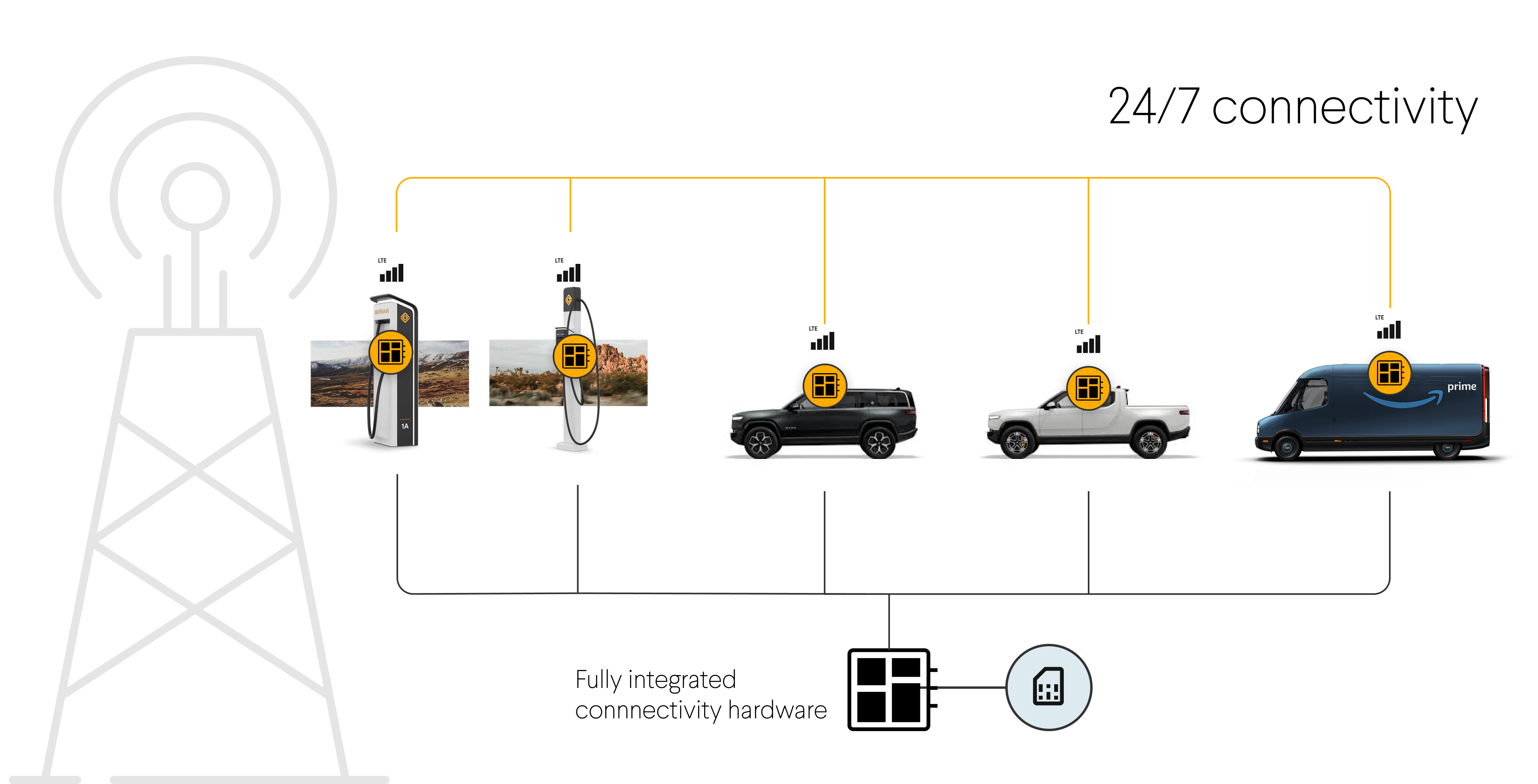
However, deploying connectivity hardware and remotely troubleshooting cellular connectivity issues was historically troublesome using 10+ third-party portals. Both Rivian and Amazon want to add a new SIM management feature to the existing Connectivity Management Platform to:
To understand the problem and build empathy around the end-users, I started doing research.

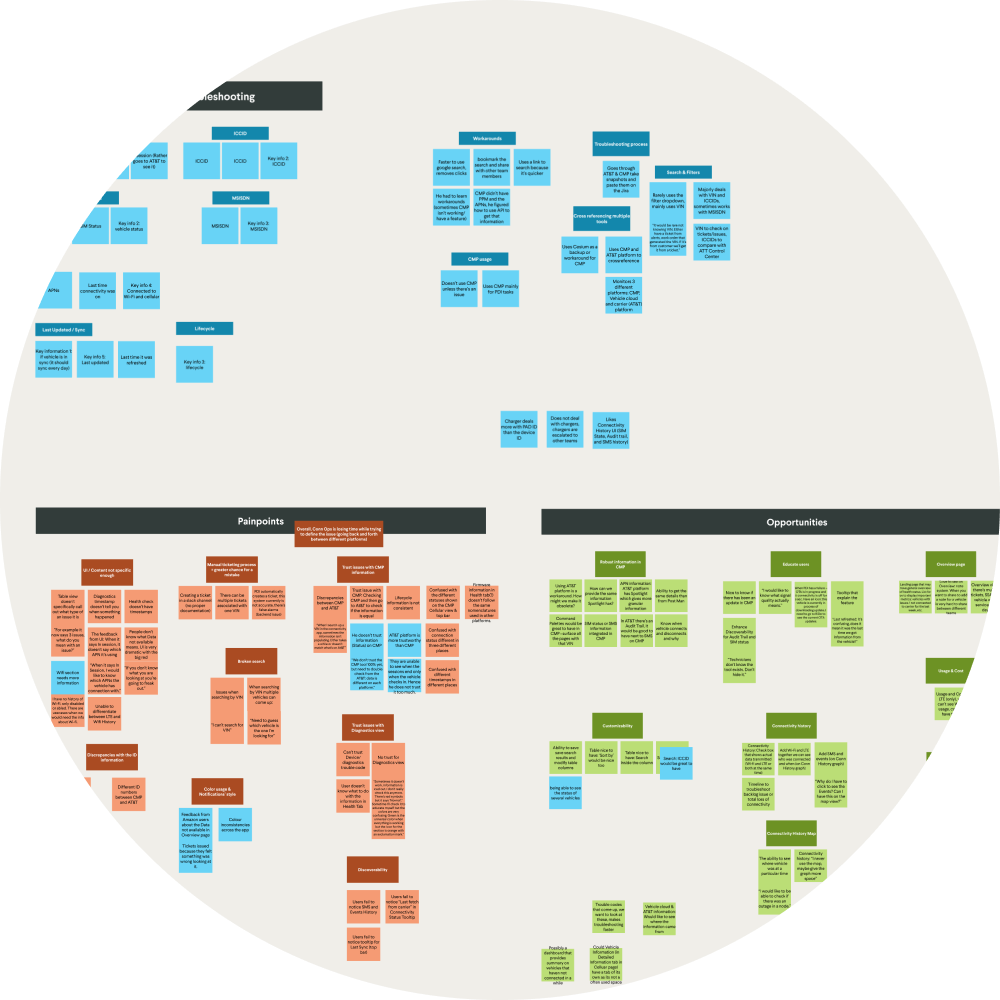

I observed the production line and mapped out the current workflow
I learned how to fix connectivity issues from connectivity specialists
I interviewed key users to learn about their daily life and pain points
Via my research, I identified the major persona: connectivity operation specialists.

To help my cross-functional partners build up empathy, I created a user flow to map out the workflow of a connectivity operation specialist and their pain points.

After discussing the research findings with the team, we further defined the project goal to be designing an all-in-one system to:
I got started by looking into the current Information architecture and figuring out how this feature could live seamlessly within the existing Connectivity Management Platform.
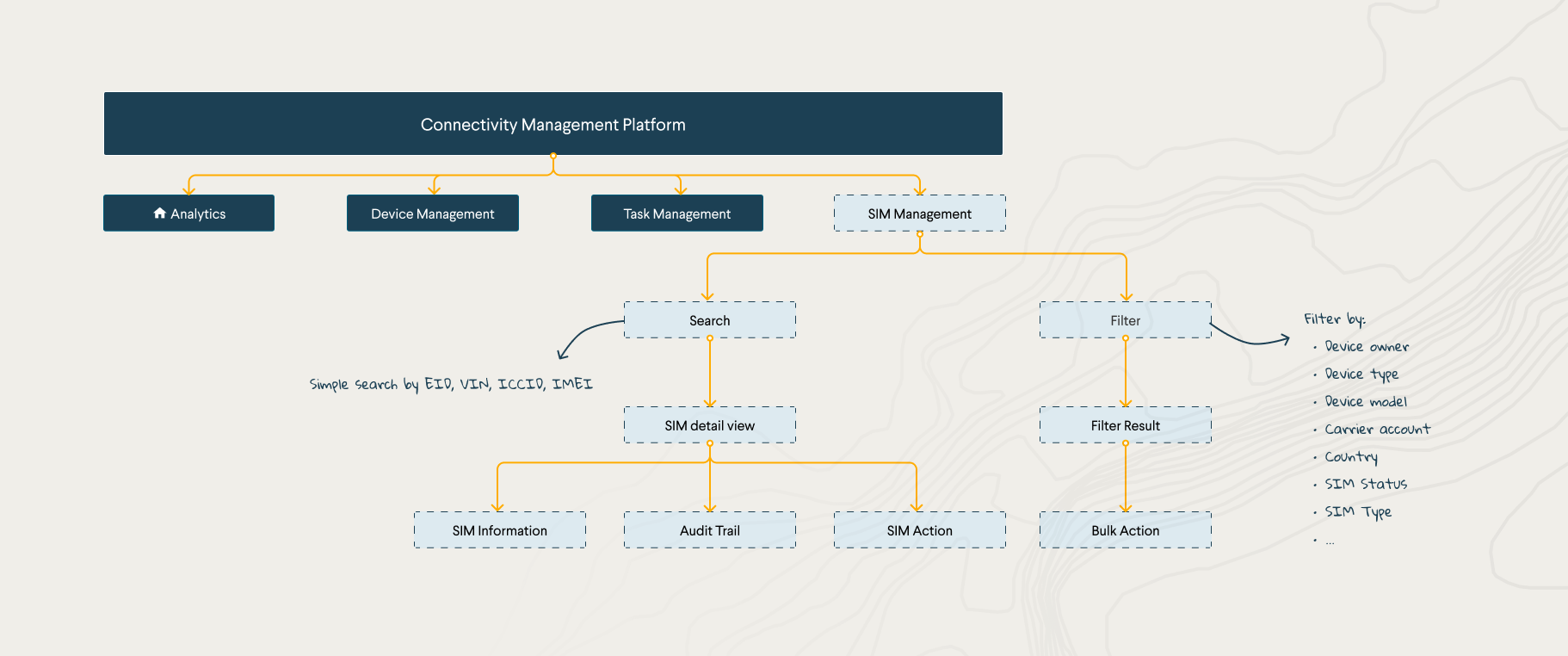
Initial information architecture based on team discussions
I started brainstorming different solutions and figuring out what might be a good milestone solution that meets business needs, user needs, and short-term resource constraints.
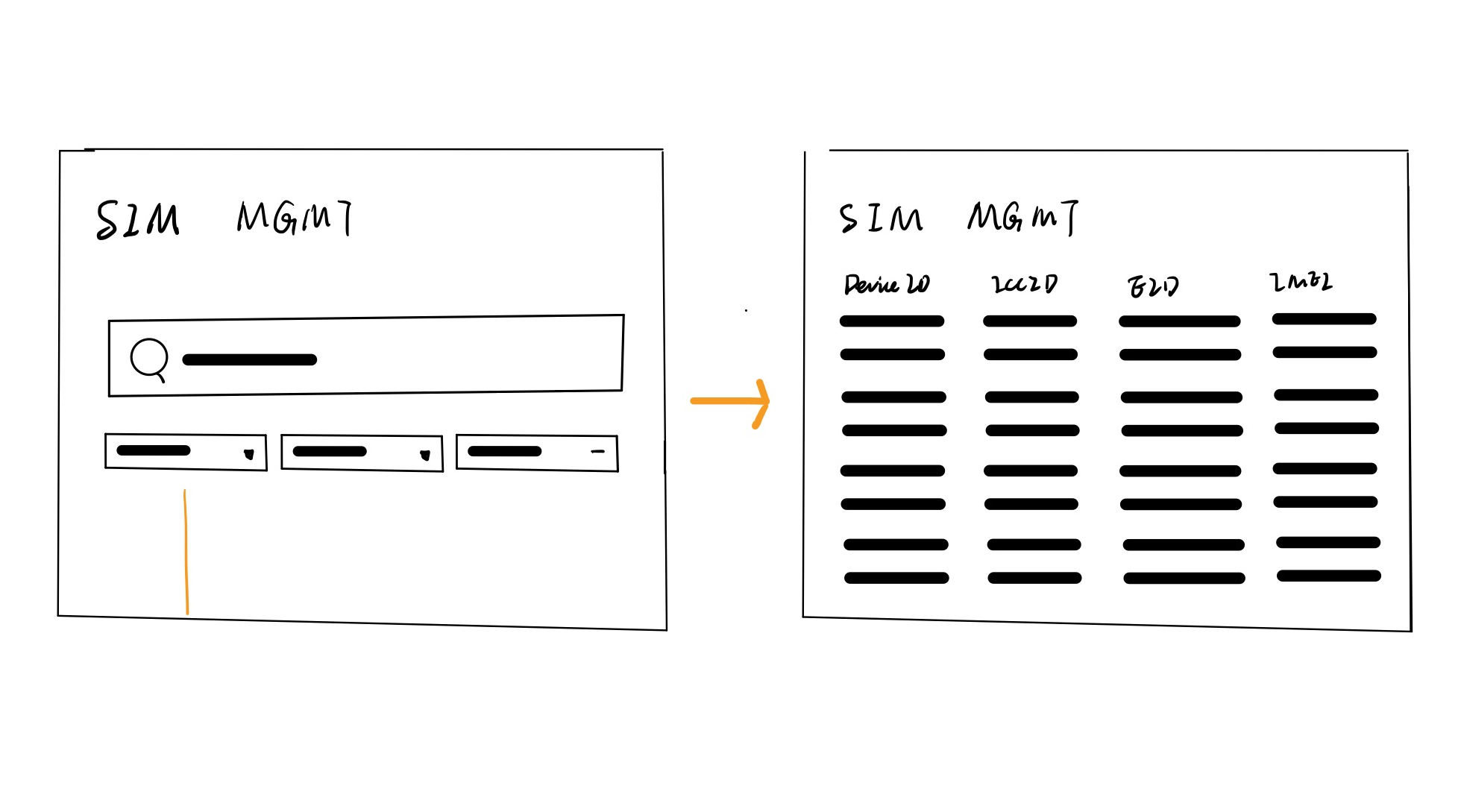
Filtering through millions of objects will be very slow without serious engineering investment. Filters have complicated dependencies on each other, which make them hard to use.
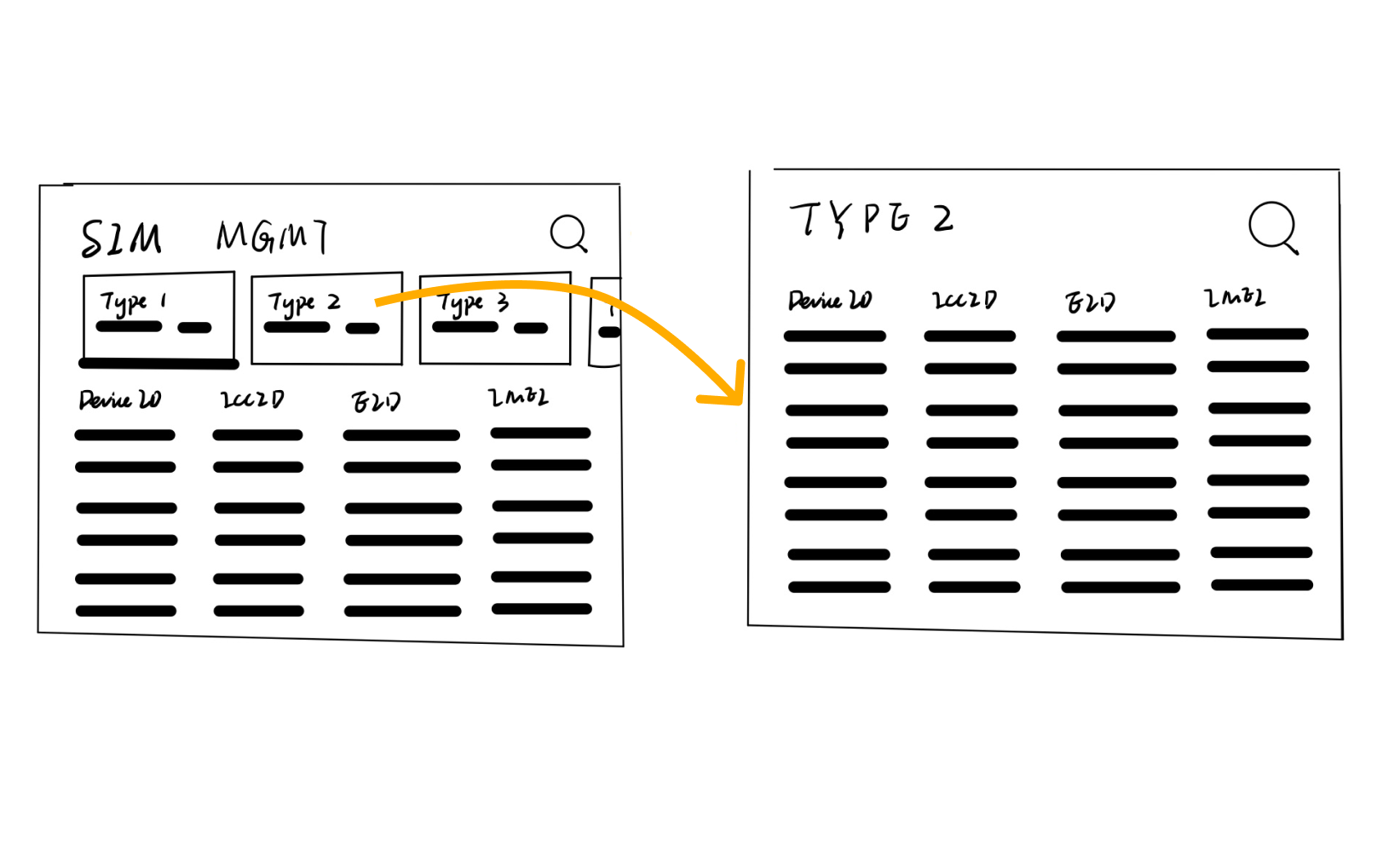
Use scorecards as required filters to help users understand the logic.
Provide opportunities to aggregate information to admin users.
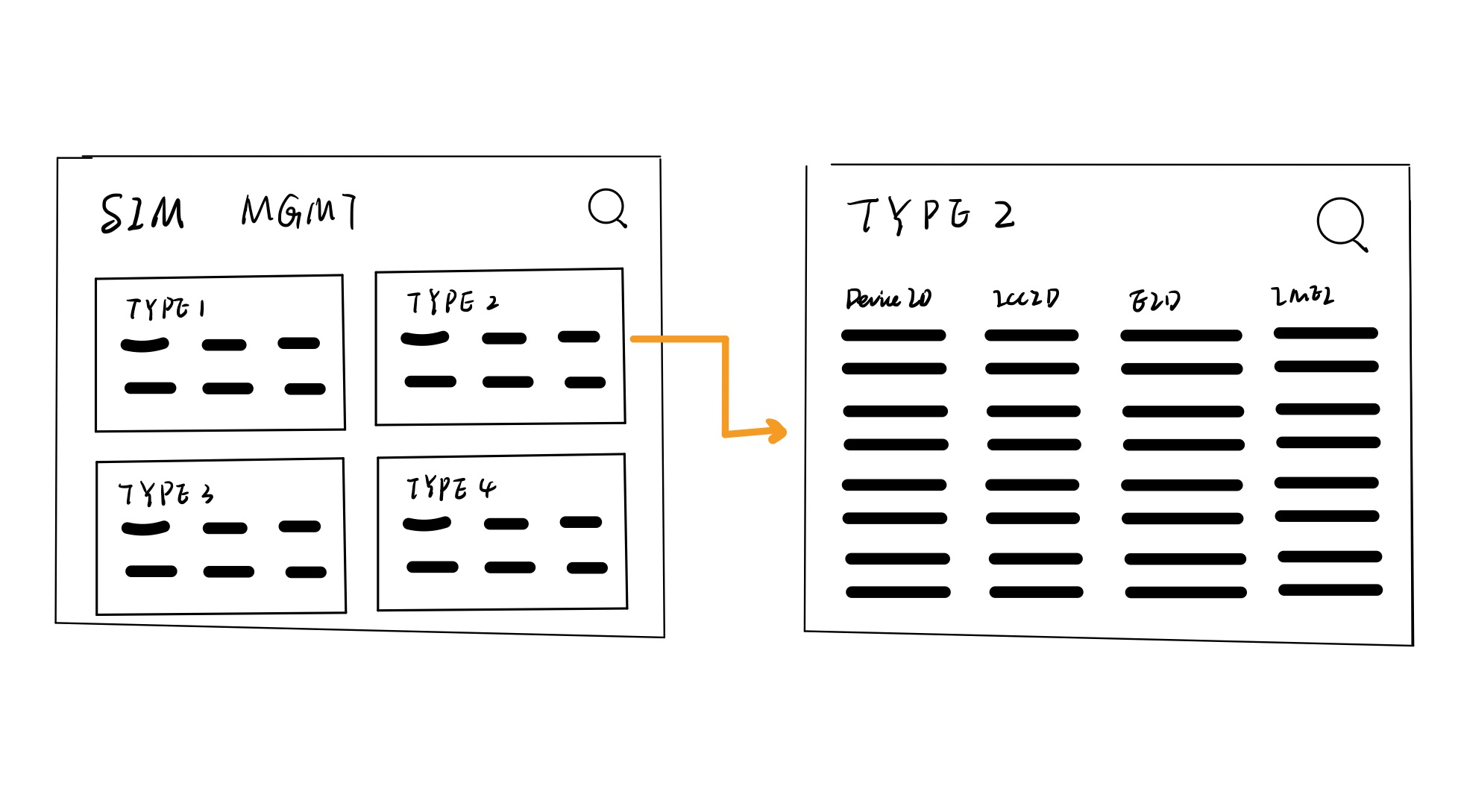
Use widgets to fully categorize SIM cards based on key attributes and enforce a more meaningful grouping pattern.
Easy to implement in the short term.
After presenting all concepts to the entire team, we decided to go with option 3 for the initial implementation because it meets our immediate needs and was the most feasible solution based on the available engineering resources.
I started putting together the entire flow to see how option 3 works from end-to-end. This helped identify potential gaps that needed further design exploration.

After figuring out the major flow to locate a particular SIM profile, I started looking into the SIM profile detail view. Knowing that there are multiple SIM profile types and each one has unique data attributes, I started exploring ways to design a flexible layout that works for each profile type.
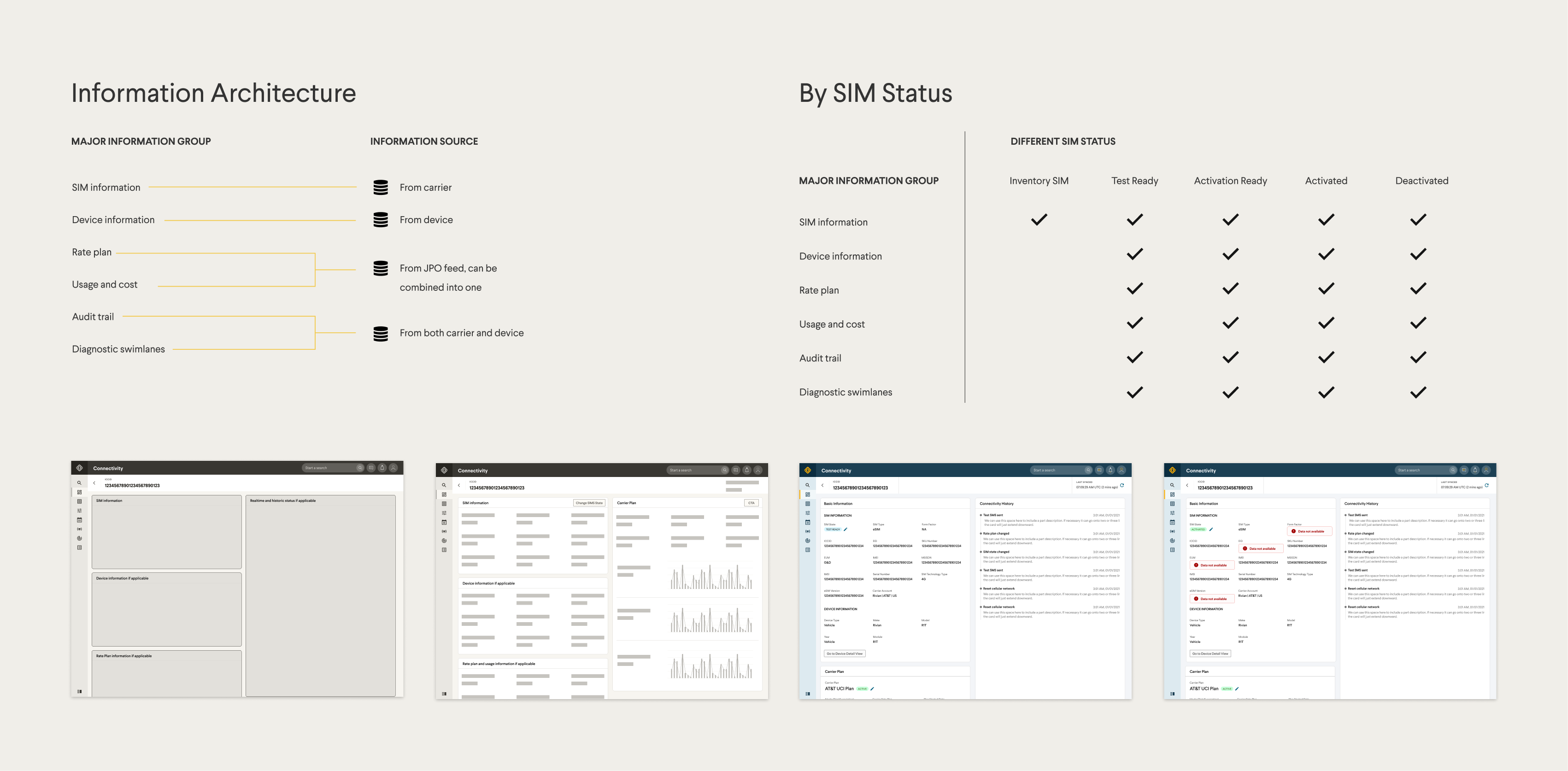
After a few iterations, I decided to group information into different cards. In this way, we can accommodate the differences between different SIM profile types using one design layout. Also, we will be able to add or remove cards when new use cases come up.
I hosted multiple design reviews with product managers and circled back to the connectivity operations team to get feedback. The first question was whether the design would be flexible enough to handle multi-dimensional slicing and dicing.
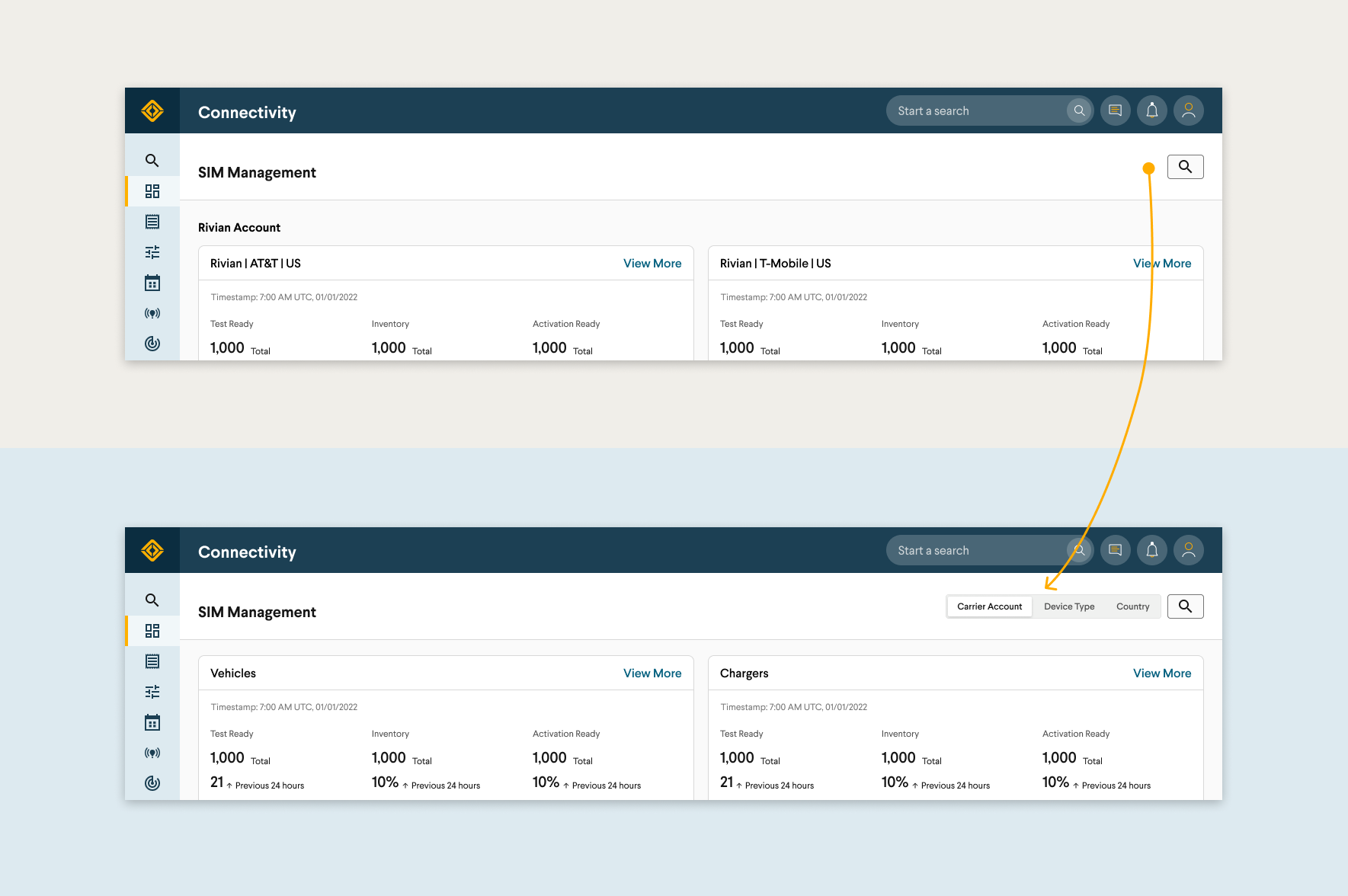
Connectivity managers want to segment SIM information by different metrics to get a holistic view of the entire SIM profile inventory.
I added a content switcher which allows the user to view widgets by different metrics.
Another big concern was if this design would scale in the future with more advanced functionalities.

When digging into an issue, connectivity operation specialists need to see all the historic events to understand what exactly happened.
I expanded the historic information module to incorporate a timeline view.
The discussion helped us collect feedback from our end users and engineering partners and built up our confidence that the current design will be a solid foundation for future enhancements.
As a team, we decided to start implementing the MVP design. I handed off the final design to the engineering team with detailed annotations. The final user flow is mapped below:

Show overarching SIM status information for admin users
Use categorizations to avoid mixing SIM profile types
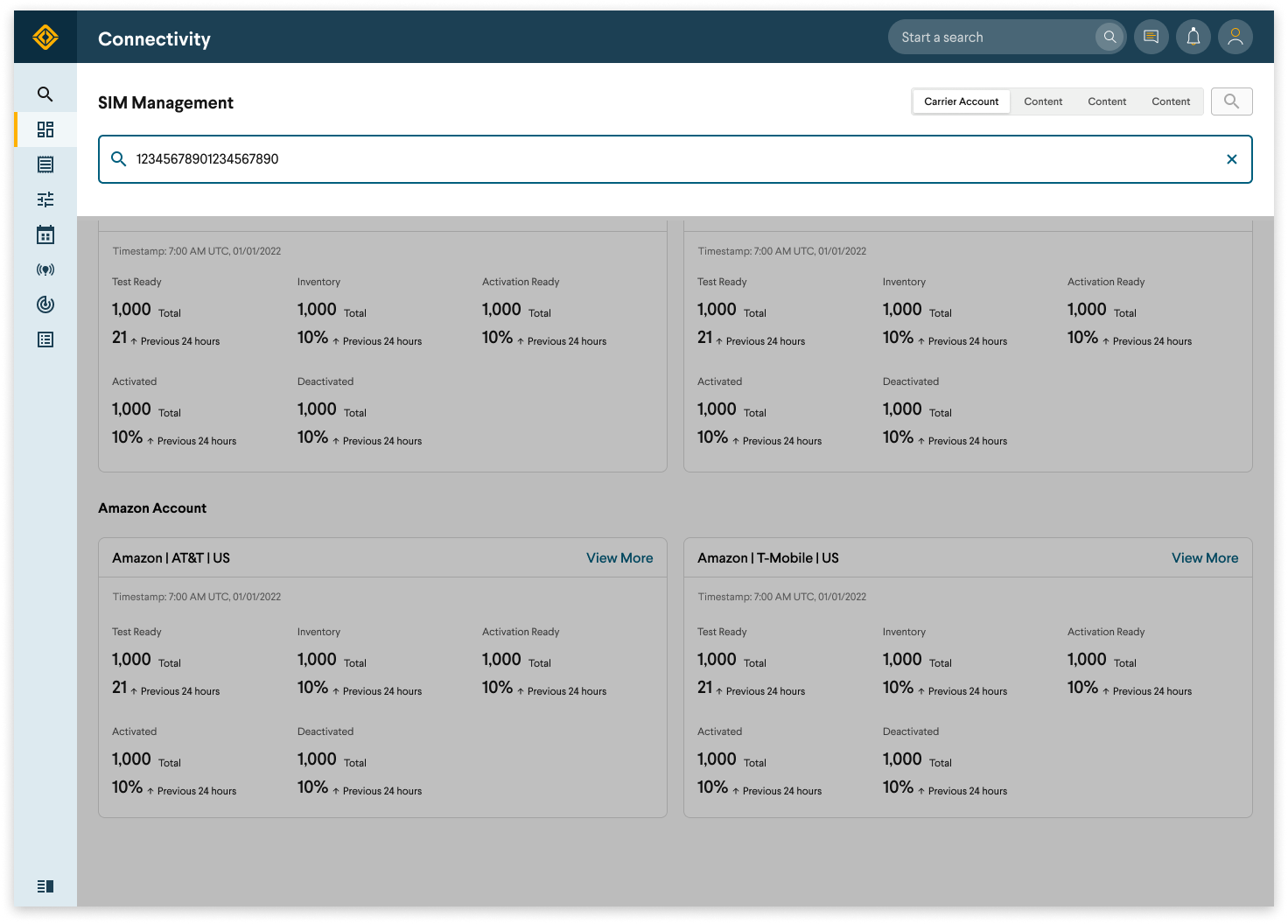
Support searching by multiple unique identifiers to empower fast diagnostics across different SIM profile types

Enable bulk troubleshooting and configurations for the selected SIM profile category

Organize information from all 3rd party portals into cards
This makes it easy to customize cards for different SIM profile types
The final design has been built and deployed inside of the Rivian Connectivity Management Platform. SIM Management is currently being used to support all Rivian devices and Amazon delivery vans..
The most difficult part of SIM management design was to figure out how to design for scalability and flexibility. My design needs to support a few hundred million devices with very different profile types. At the same time, I was constrained by a very tight timeline and limited engineering resources. To solve these challenges, I created a design squad that synced daily with product managers and engineers, got their feedback, and engaged them as much as possible. In this way, I was able to keep everyone on the same page and think out of the box but still within constraints.
Thanks for reading!
Back